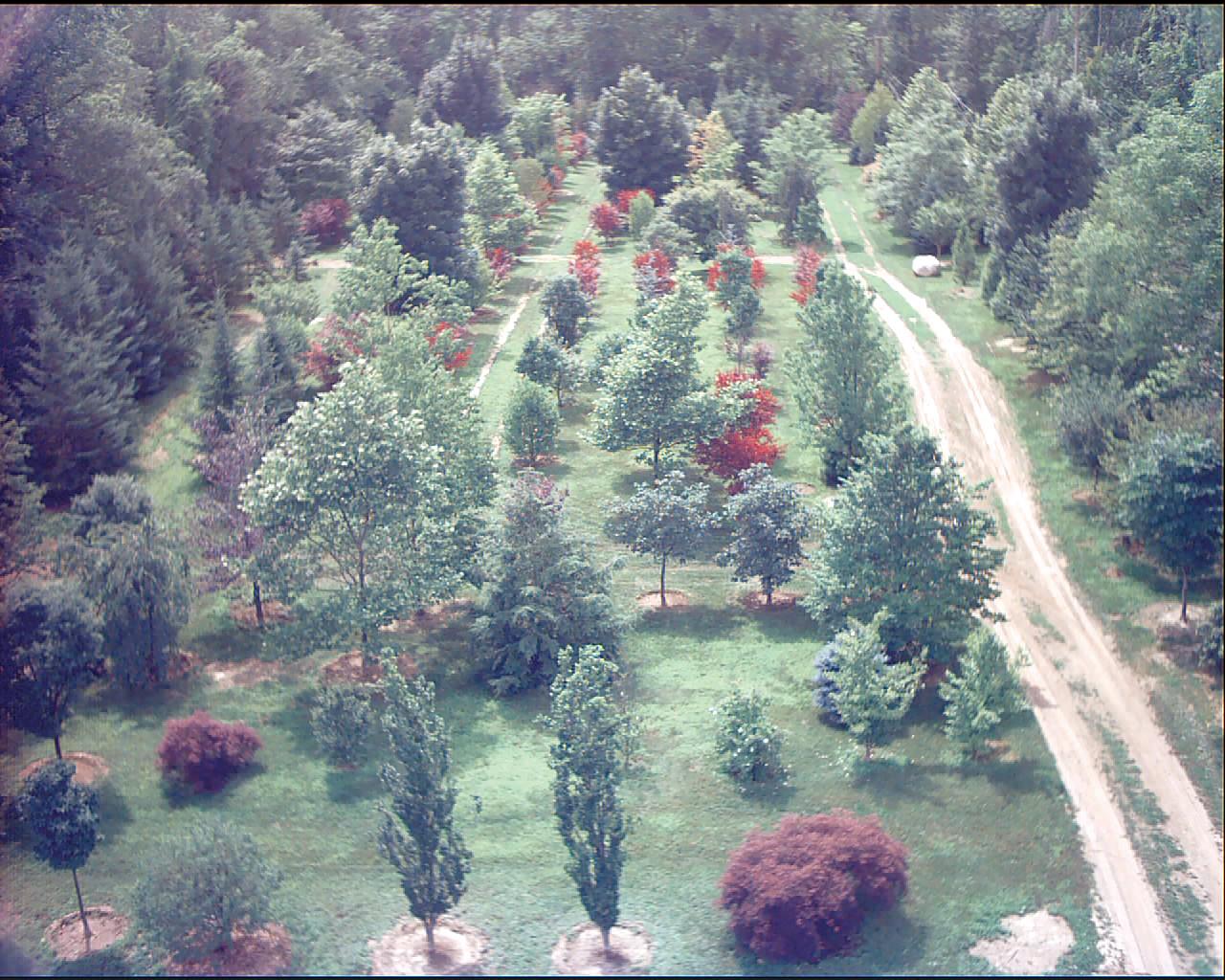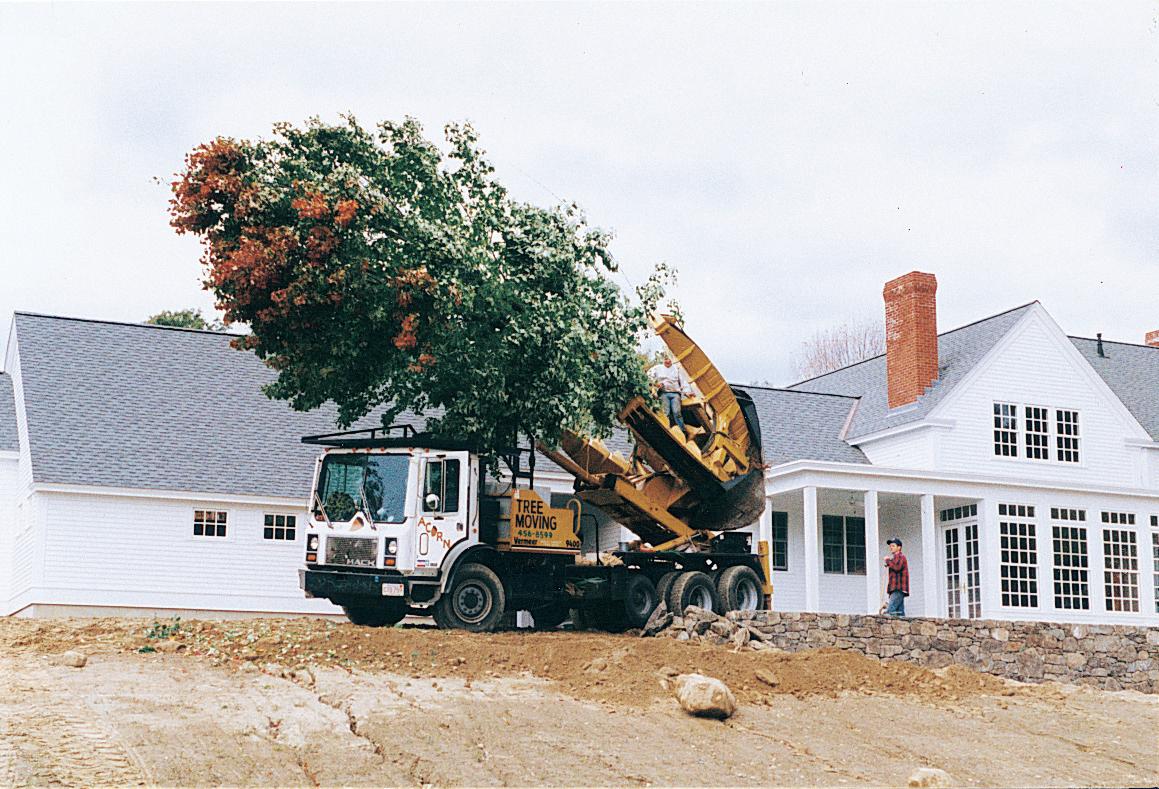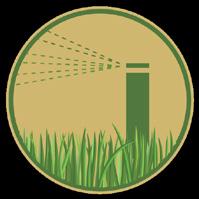





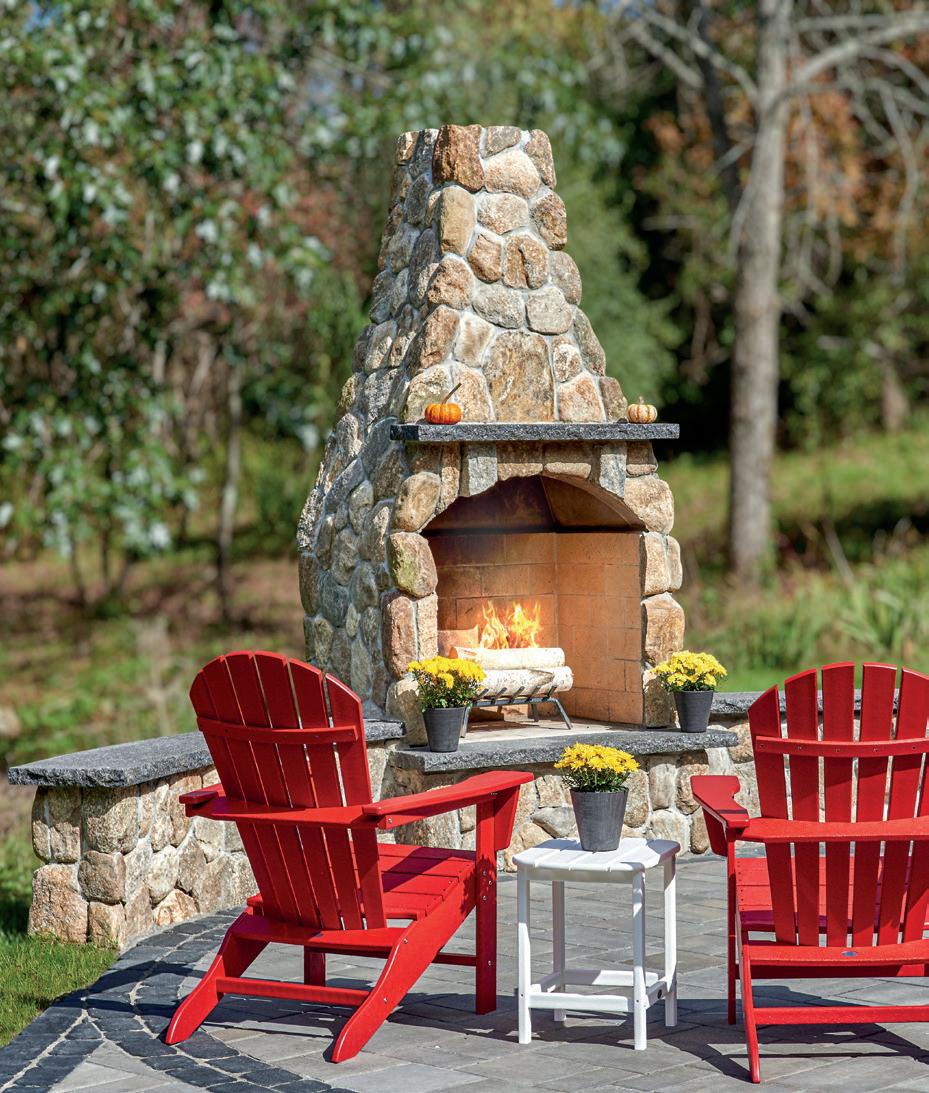



























PRESIDENT
Kerry Preston, MCH Wisteria & Rose, Inc. (617) 522-3843
VICE PRESIDENT
David Vetelino, MCH Vetelino Lanscape Inc.
Tel: (781) 826-0004
SECRETARY/TREASURER
Dave Anderson Mayer Tree
Tel: (978) 768-6999
PAST PRESIDENT
Chris O’Brien, MCH Howard Designs, Inc.
Tel: (617) 244-7269
DIRECTORS
Steve Davis, MCH Bigelow Nurseries, Inc
Laura DiCarlo, MCH Cavicchio Greenhouses, Inc.
Justin Mortensen Farm Credit East
Patrick Parent Mahoney’s Garden Centers
Kelly Perry, MCH Swan Point Cemetery

EDUCATION & RESEARCH COMMITTEE
Deborah Trickett, MCH
The Captured Gardens (781) 329-9698
FINANCIAL COMMITTEE (FINCOM)
Steve Corrigan, MCH — Chair
Mountain View Landscapes & Lawncare, Inc.
Tel: (413) 536-7555
GOVERNMENT RELATIONS COMMITTEE
Chris O’Brien, MCH
Howard Designs, Inc.
Tel: (617) 244-7269
HISTORY COMMITTEE
Philip Boucher, MCH — Chair
Elysian Garden Designs
Tel: (508) 695-9630
Skott Rebello, MCH — Vice Chair Harborside P.S.
Tel: (508) 994-9208
MARKETING COMMITTEE
Justin Mortensen - Chair Farm Credit East
Tel.: (508) 946-4455
MASSACHUSETTS CERTIFIED
HORTICULTURIST BOARD (MCH)
Corinne Jean, MCH — Chair Wisteria & Rose (617) 522-3843
Advisor: Jack Elicone, MCH John R. Elicone Consulting
MEMBERSHIP COMMITTEE
David Ahronian, MCH - Chair Ahronian Landscape & Design, Inc. (508) 429-3844
PUBLICATIONS:
Editor in Chief: Rena Sumner MNLA Reporter: Amber Ahronian
Advisors: Rick Reuland, Trevor Smith, Beverly Sturtevant
EXECUTIVE DIRECTOR
Rena M. Sumner Tel: (413) 369-4731 mnlaoffice@aol.com
LEGISLATIVE DIRECTOR
John V. Fernandes
Attorney at Law John@fplaw.net




By Kerry Preston, MCH
Iam going to start this President’s message on a bit of a soapbox. About what, you may be asking? Well, here it is:
Bunnies. Yes, those cute, fuzzy, long-eared, cotton-tailed menaces to society.
Now before I truly go off the rails, I need to say that I have always loved rabbits. I mean really, Bugs Bunny? Sly and Sassy? Peter Rabbit? Who doesn’t love a bunny in a blue coat with buttons? I even nicknamed my daughter Bunny when she was born and still call her that 18 years later (please don’t tell her I told you that). But somewhere in the last year or two, those soft, furry little creatures have turned into a gang of rabbits that are destroying my yard and my garden.
How is that possible you might want to know? It all started about two years ago when I didn’t realize that a bunny had built a nest in one of my raised planters. How cute. HA! Let me tell you how NOT cute that turned out to be. Espalier fruit trees: Stripped off the bark. Rose bushes: Pruned with teeth sharper than my pruners could ever be. Dahlias, echinacea, rudbeckia: No chance for those poor plants. Mowed them down and used the stems as dental floss. And yet, I still believed these sweet little creatures would just move on eventually. After all, there are plenty of gardens in my neighborhood to devour. But no.
Last year, I started making a list of perennials that are not on the approved rabbit food list (like someone asked them if they have food allergies??). Nepeta, alliums, anemone, and yarrow — all not preferred foods. Again, HA! “Thanks for the salad fixings, Kerry, could you please refresh the Echinacea? It appears to be all gone.”
Winter came, and I was convinced they would just leave and hibernate (do they ever rest?!?!?) in the Arboretum or some other tropical location. But again, NOPE. What little snow we had was covered in a slew of rabbit paw prints. It was like they had nightly races across the yard, “Who can get to that yew bush first? The last one there is forced to eat this gnarly old rhododendron!” Yes, they ate that, too.
Now, I live in the city, specifically Jamaica Plain. We don’t have a lot of predators but I have seen the occasional redtailed hawk and coyote wandering around. You would think that in the natural cycle of life, the herd would be thinned a bit. But these are city bunnies. They have a presence, an attitude that must scare away the predators. I put up a bunny fence around my front yard; they stayed away for a few weeks, and then one day, a baby bunny hopped right up next to my foot while I was deadheading the snapdragons. Mocking me! I have reached the end of my rope here. I am slowly losing my battle and my mind at the same time. I am having deepmeaningful conversations with these rabbits as I let them know that since they do not pay rent, they are not allowed to live on my property. I explain that the Arboretum is just across the street with beautiful fields of clover they could frolic on. They don’t care.
Last night, as I was discussing the concept of the bunny fence with the cute fuzzy baby bunny, I gave it an ultimatum: Leave or I will get a Have a Heart trap and move you somewhere else. It arrives from Amazon tonight.
Keep in touch, my friends. If you want to commiserate with me, please send me an email or check in at the Leadership Forum in October. Until then, I will be in my garden discussing things with the tenants.
All my Best,
Kerry Preston, MCH MNLA President Wisteria & Rose


By Amber Ahronian
Laura DiCarlo, MCH, is a wholesale salesperson at Cavicchio Greenhouses in Sudbury, MA. She thoroughly enjoys her workplace and the people she works with, noting that it is both a sizable, growing company and an accessible community. She enjoys the innovation and work culture at Cavicchio and appreciates the wealth of knowledge and support she has found there.
She made her way to her current position after a diverse set of professional experiences that have given her a wide variety of skills. Having started her professional journey with a long tenure in finance and a short stint in manufacturing, she engaged in some mindful thinking about her values and sensibilities and has now found a path that feels comfortable and correct in the green industry. We’re lucky to have her! Her shift to the green industry brought her into alignment with her love for the natural world and has been very fulfilling. She reports that curiosity is key and that there is always so much to learn.
Laura came into the industry with passion. A leader in the peer education series and sales training program at Cavicchio, she put her love of learning to good use. She connected with MNLA members along the way, including Dave Vetelino, President Kerry Preston, and numerous coworkers. All of them encouraged her to get involved, and she jumped in. Earning her MCH designation in January 2024, she was then voted onto the MNLA board of directors in February. Laura reports that while she had never previously considered getting involved with the board, her fellow members were very encouraging and informative, and that gave her the confidence to pursue the green industry volunteerism she now loves. On the board, she engages in conversations about current policy, upcoming events, innovations, collaborations, internal affairs, inclusivity, and accessibility. She notes the board is a beautiful collection of people from various aspects of the industry.
It has been a place for brainstorming and mentorship outside of the workplace.

A more recent addition to her volunteerism has been her participation on the education subcommittee. Collaborating on projects including educational programming for summer and winter conferences, she has been enjoying her new involvement. She is particularly invested in getting high school students involved in the industry because, as a person who found her way to this line of work, she wishes she had been more aware of it earlier. She wants to help grow interest and connections within the next generation so that they can find happiness in the green industry too.
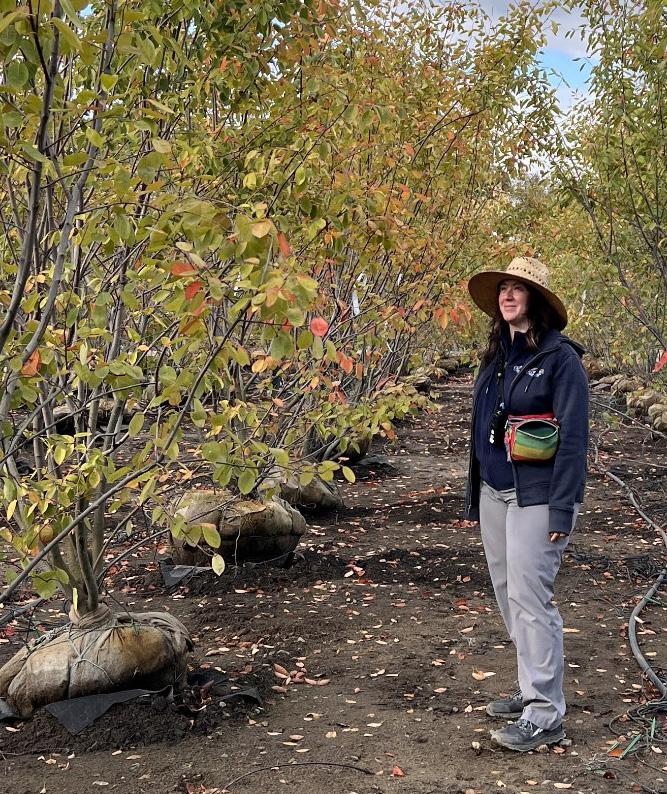
She notes that education among adults is also never ending, and she has learned a lot from her volunteering experience, both developing new skills and building on existing ones. Organizing events, building relationships, and engaging with policymakers and industry partners are examples that come to mind more readily. However, she notes that being on the board and education subcommittee has been an opportunity to practice listening and flexibility and embark on other personal and professional growth journeys that have been very fulfilling.
When asked what she would suggest to those interested in getting involved, Laura offers, “Great! Do it! Go for it!” She says it is an awesome and wonderful experience that is challenging in the best way possible. She could not imagine working with a greater group of people who are extremely supportive. So, as Laura says, “Support the green industry. Represent the green industry.”

By Alec Mickiewicz, MCH
Last summer, I took a vacation to the Missouri Botanical Garden in St. Louis. It’s an oasis that offers visitors an enchanting escape into nature. Established in 1859, it is one of the oldest botanical institutions in the United States and spans 79 acres of beautifully curated gardens. As you wander through the various themed gardens, you encounter an array of landscapes, from the serene Japanese Garden with its tranquil koi ponds and meticulously pruned trees to the vibrant, butterfly-filled Butterfly House. The Climatron — one of my favorite parts — is a striking geodesic dome that houses a lush tropical rainforest complete with waterfalls and exotic plants, providing a unique, immersive experience.


Vacationing at the Missouri Botanical Garden is an educational journey through the plant kingdom. The garden is home to a vast collection of rare and endangered plants, and it plays a crucial role in plant conservation and botanical research. Families can participate in interactive exhibits at the Doris I. Schnuck Children’s Garden, where kids can learn about the environment through play. Seasonal events and festivals, such as the Whitaker Music Festival and the Garden Glow holiday light display, offer visitors a chance to experience the garden in new and exciting ways throughout the year. The Missouri Botanical Garden is a must-visit destination that promises beauty, education, and inspiration.
Alex Mickiewicz, MCH Wisteria & Rose

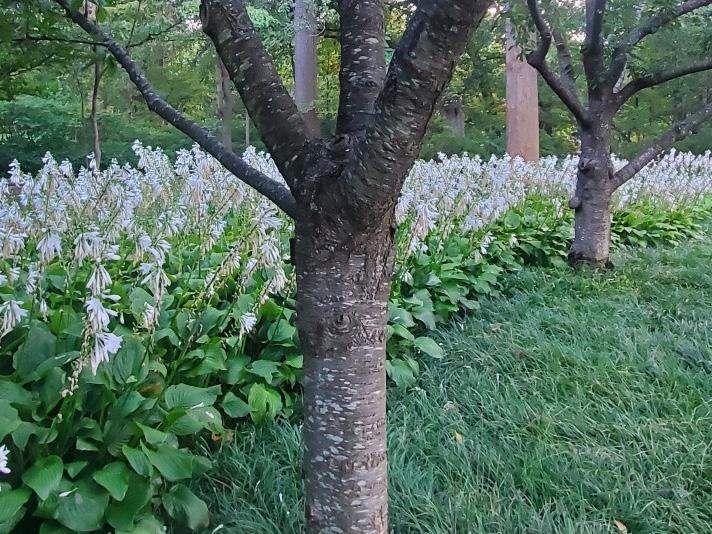

By Chris O’Brien, MCH
Local businesses play a vital role in their communities, providing employment, fostering innovation, and driving economic growth. Their success is often influenced by the policies and regulations set by state legislatures. For this reason, it is beneficial for individuals in the green industry to actively introduce themselves to their elected representatives and interact with public officials on issues affecting them. By building relationships with local state lawmakers, businesses can influence the legislative process, advocate for policies that benefit their operations, and help shape a regulatory environment conducive to growth and sustainability.
The primary importance of green industry businesses engaging with their elected representatives is the opportunity to voice their concerns and advocate for policies that support their interests. State legislatures have the power to enact laws that can significantly impact businesses, from tax policies and labor regulations to environmental and zoning laws. If businesses do not communicate their needs to their representatives, they may find themselves subject to legislation that hinders their operations. By proactively reaching out, our businesses can help ensure their interests are considered when developing new policies.
Many state lawmakers are not fully aware of the specific challenges the green industry faces. When informed owners take the initiative to introduce themselves and provide insights into their operations, they help educate lawmakers on the realities of running a business in their district. This, in turn, can lead to more informed decision-making and legislation that is better tailored to the needs of local businesses.
Additionally, cultivating relationships with elected officials can help businesses gain access to key resources and opportunities. Elected representatives often can connect landscaping and nursery firms with government programs, grants, and other forms of assistance that can help them grow and
succeed. By establishing a rapport with our legislators, we can position ourselves to take advantage of these resources.
Interacting with public officials on issues affecting the green industry can be highly effective in shaping the legislative landscape. One of the most significant ways local businesses can influence policy is through advocacy. When businesses communicate their positions on key issues, they can help sway public officials’ opinions and guide the direction of policy debates. For example, recent building code proposals to require the installation of complex automated fire suppression systems in new and remodeled greenhouses were set aside for further discussion when greenhouse operators said the cost could be prohibitive.
Another key benefit of interacting with public officials is the potential for long-term policy changes that benefit not only individual businesses but also the broader business community. When businesses consistently engage with their representatives, they help create a dialogue around important issues like economic development, workforce training, and infrastructure investment. Over time, these discussions can lead to substantial policy changes that improve the business climate in the state. MNLA has been engaged in such discussions. Support from green industry companies with their local reps reinforces those efforts.
It is essential for local businesses to introduce themselves to their elected representatives and actively engage with public officials on issues that affect their operations. With elections coming up this fall, the next few months provide an opportunity to introduce yourselves to your state and local representatives if you have not already done so. Then, when the time comes to speak up on issues affecting your company or the entire green industry, the discussion can go directly to the subject with someone already acquainted with you and your business.
Your vote DOES make a difference! Don’t miss the opportunity to weigh in!!
Chris O’Brien, MCH Howard Designs, Inc.
The Massachusetts Prohibited Plant List has been updated as of September 2024 to add two additional invasive plants:
• Callery pear/Bradford pear (Pyrus calleryana)
• Wall-lettuce (Mycelis muralis)
There will be a phase-out period for these newly listed species so that Massachusetts nurseries and agents can sell off existing stock that was received or propagated before September 19, 2024.
The schedule for this phase-out is listed below:
• Callery/Bradford pear: No sales permitted after December 31, 2028
• Wall-lettuce: No sales permitted after December 31, 2025
Imports of these species from out-of-state growers or sellers are prohibited as of September 19, 2024. There is no phase-out period for imports.
On August 22, 2023, the Massachusetts Department of Agricultural Resources (“Department”) held a public hearing regarding the addition of the above-listed plants to the Massachusetts Prohibited Plant List (“List”). The Department also received written comments prior to and up to 5:00 pm on August 25, 2023. No verbal or written comments were received during the hearing process.
After reviewing the scientific information provided by MIPAG in its request, the Department has made the determination that wall-lettuce (Mycelis muralis) could have a

negative impact on native plants and natural habitats in Massachusetts and therefore approves the MIPAG request to add the species to the Massachusetts Prohibited Plant List.
After reviewing the scientific information provided by MIPAG in its request, the Department also made the determination that Callery pear/Bradford pear (Pyrus calleryana) poses a threat to land in Massachusetts, and therefore approves the MIPAG request to add the species to the Massachusetts Prohibited Plant List.
However, the Department recognized the importance Callery pear has when used as a grafting agent for the production of pear fruit, so decided to hold another hearing on April 26, 2024, regarding adding Callery pear to the List with an exception for grafting stock. The majority of the comments were in support of adding Callery pear to the List with this exception.
Therefore, Callery pear will be added to the List with the following exception:
• When Callery pear (Pyrus calleryana) is used as a grafting agent for the production of pear fruit, the grower must monitor their trees and identify any trees where the graft has failed. Since Pyrus calleryana used as grafted rootstock has been documented to regrow if the graft fails, the grower must remove and dispose of the rootstock in a way that prevents the trees from generating new growth.
• Agents/Growers can no longer receive new stock or begin growing new stock of either wall-lettuce or Callery/Bradford pear as of the issuance of this notice but may sell any existing stock during the phase-out period.
For more information about this and other recent updates to the Prohibited Plant List, visit: www.mass. gov/info-details/massachusetts-prohibited-plant-listupdates
www.mass.gov/info-details/massachusetts-prohibitedplant-list-updates

by Heather Prince
Mice, voles, chipmunks, moles, rabbits, opossums, raccoons, skunks, and deer – oh, my! Our landscapes and gardens are home to a bevy of wildlife including some that can be destructive nuisances. From formal manicured gardens to the hottest trends in naturalistic plantings, every landscape sooner or later encounters damaging critters. How can we be creative with our plant choices to manage the wildlife and still have beautiful plant displays? We spoke with David McKinney about his experiences managing wildlife damage at their 40 acres of arboretum and 120 acres of native woodlands and prairie.
Mice, voles, chipmunks, and moles all are species that burrow underground or at the soil level and actively dig for food. Often, that food is plant roots or bulbs — the very things we are installing in our landscapes. Fortunately, there are plant types these critters actively avoid.

plants into gardens and noticed the rodent pressure was significantly reduced. I planted everything from chives to some of our summer blooming alliums like Millennium or Summer Beauty and even the native nodding onion, Allium cernuum. We saw far fewer mole tunnels and chipmunks digging in gardens, especially if the plants were given time to root out.”
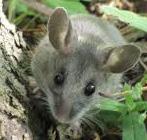
“The most destructive creatures are probably the little ones such as voles, chipmunks, or moles,” says McKinney. “They do everything from digging up new seedlings to moving plants around to eating all of the seeds we’ve just planted. They also love to plant birdseed everywhere, so then flowers come up all over the place where we don’t want them. Moles tend to tear through beds with their burrowing. My greatest challenge for a while has been how to keep rodents from destroying the garden.”
McKinney noticed a happy accident as he was adding chives to landscape beds for their lovely purple color and tough durability in Iowa soils and climate. Not only did the chives thrive and knit the beds together, but the rodent damage was significantly reduced or halted. “I like chives because of the color and how they add a nice bridging flower for late spring into summer. I noticed that in gardens where chives were planted, moles would hit the root zone of the Allium and would turn around and not come back to that garden for weeks to months. Either they had had a terrible experience in the root zone of that Allium or they just designated that garden as a ‘no enter’ area. I started adding various onion family
Rodents do not like plants with aromatic roots, particularly the onion family, in their sensitive noses and faces. Allium also deters herbivores that don’t like the taste or the scent on their fur. McKinney stresses that the most effective types of Allium are perennials with sturdy roots. The ornamental bulbs do not have the same effect. Allium is such a versatile plant family that McKinney has incorporated them into formal plantings as well as native prairies. “For informal gardens, I’ll weave Allium through a design, especially at entrance points to deter rodents. In formal beds, it’s effective as a border, both to deter critters and to add a striking statement to the garden. They are all excellent pollinator plants as well.” With so many terrific species and varieties, you can have an ornamental onion blooming throughout the season. Preferring hot, dry, situations with good drainage, Allium is tolerant of a wide range of conditions as long as they receive sufficient sun.
Onions are just one of our common garden perennials that have aromatic, rodent-deterring properties. Many plants in the mint family (Lamiaceae) not only have lovely fragrant foliage, but their roots are also strongly scented. This makes them helpful garden partners in the battle to deter rodents.
“Rodents avoid anything with fragrance like Monarda, Pycnanthemum, or Agastache,” observes McKinney, “and a lot of that has to do with their underground parts. For example, voles are surface feeders, but they dig their tunnels just at or under the soil surface. Any perennial with aromatic roots will influence their behavior and deter them from the garden. Monarda, which has surface rhizomes, especially the heirloom cultivars, work well, even if they are a little aggressive in plantings. They can be a great option for gardens that are







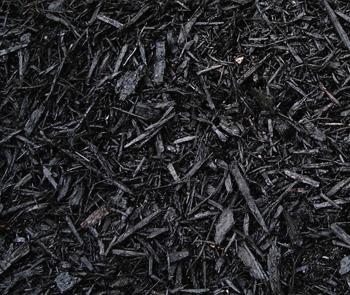






plagued by rodents or that are close to natural areas like woodlands or prairies where rodents are regular visitors to the plantings.”
For McKinney, ‘Raspberry Wine’ beebalm and the native Monarda bradburiana are particular favorites for being beautiful additions to gardens and effective at deterring voles. He also found self-heal, Prunella vulgaris, to be an excellent front-of-the-border or pathway
plant. With fragrant foliage and roots, it deters critters from digging. McKinney recommends ‘Magdalena’, a showy cultivar from Brent Horvath’s breeding at Intrinsic Perennials. At just 6 inches tall and loaded with purple flowers, it blooms from June into September and is hardy to USDA Zones 3 to 9. Its European cousin, Prunella laciniata, features delicate cut-leaf foliage and may be pink or white-flowering. It also adds a

pretty, long-blooming element to plantings. Calamintha and Nepeta are also effective in deterring rodents.
Rabbits are voracious herbivores, especially young ones, but there are plants they do not favor. Aromatic perennials are a great low-maintenance alternative to sprays, granular repellants, or fencing.














“When rabbits encounter aromatic plants like things in the mint family or herbs, they don’t like it,” said McKinney. “The aromatic oils get on their fur and then they leave a scent trail as they travel, including back to their den. If you think like a coyote or a fox looking for a nice rabbit meal, a trail of aromatic oil is a signal, and you’re going to check it out. Rabbits don’t like being attractive to predators and easy to find. Encounters with aromatic plants are sort of like seasoning them for predators. They don’t want to bring the scent of oregano back to their babies.”

usually have their heads down as they walk. You do need to choose tall plants like mountain mint for them.”
Raccoons and skunks forage for insects, uprooting gardens looking for tasty slugs and grubs. They will often create set paths to their favorite areas, and deer will create customary paths


Deer also do not care for plants with fuzzy or hairy leaves. “I like to think of anything stiffly hairy as not being palatable to herbivores,” observes McKinney. “They’ll avoid things that have stiff hairs on the surface of the leaves. Perennials like butterfly milkweed, asters, black-eyed Susans, and Artemesia have stiff or glandulous hairs. Deer don’t like that fuzzy or prickly feeling on their tongue or in their mouth because that’s the softest part of their face. The best way I’ve seen to prevent deer from entering a garden is to spread out as many aromatic species as you can, almost as a border. You need more than one or two of a Monarda or an Allium. You need many spread across the garden so that every time

P: 207-499-2994 F: 207-499-2912
sales@piersonnurseries.com
through landscapes as well. None of them like their sensitive noses coming in contact with fragrant plants. “I look a lot at preventing raccoons, rabbits, and deer from creating footpaths or using already designated footpaths,” explains McKinney. “I’ll plant an aromatic right in the middle of where they’re walking to influence their behavior. Deer do not like having their face and nose in something decidedly aromatic, and they •
• www.piersonnurseries.com
Mailing Address & Office Address: 313 Waterhouse Rd, Dayton ME 04005
Current availability is posted on our website (PW: pni2024)
Contact our office to be added to the weekly availability email list.
• EVERGREENS
• PERENNIALS & GRASSES
• NATIVE & WETLAND


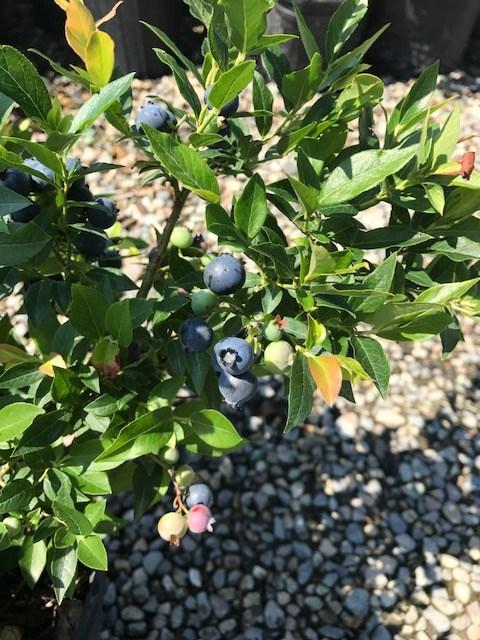

Established in 1910, Cavicchio Greenhouses is a fourth-generation New England farm working more than 250 acres in Sudbury. As a horticultural grower and landscape distributor, we cultivate and supply an extensive variety of annuals and perennials, nursery stock, stone, masonry and landscape materials. With a hard-earned reputation for service, quality, selection and sustainability, we work with professionals and garden centers throughout the area to keep our region beautiful.

www.cavicchio.com
110 Codjer Lane, Sudbury, MA 01776 978.443.7177
or every other time they’re interacting with the plants, they’re having a negative experience.” Interplant hairy foliage with aromatic plants and you will experience significantly less deer browsing. McKinney wouldn’t say deer-proof, because a hungry deer, like a hungry rabbit, will try anything and everything once.
Deer are also a problem in September and October during rut when males rub their antlers on young trees to mark their territories. “One of the strategies we employ is to plant aromatic perennials at the base of young trees,” suggested McKinney. “The fragrant oils of something like a tall Pycnanthemum deter
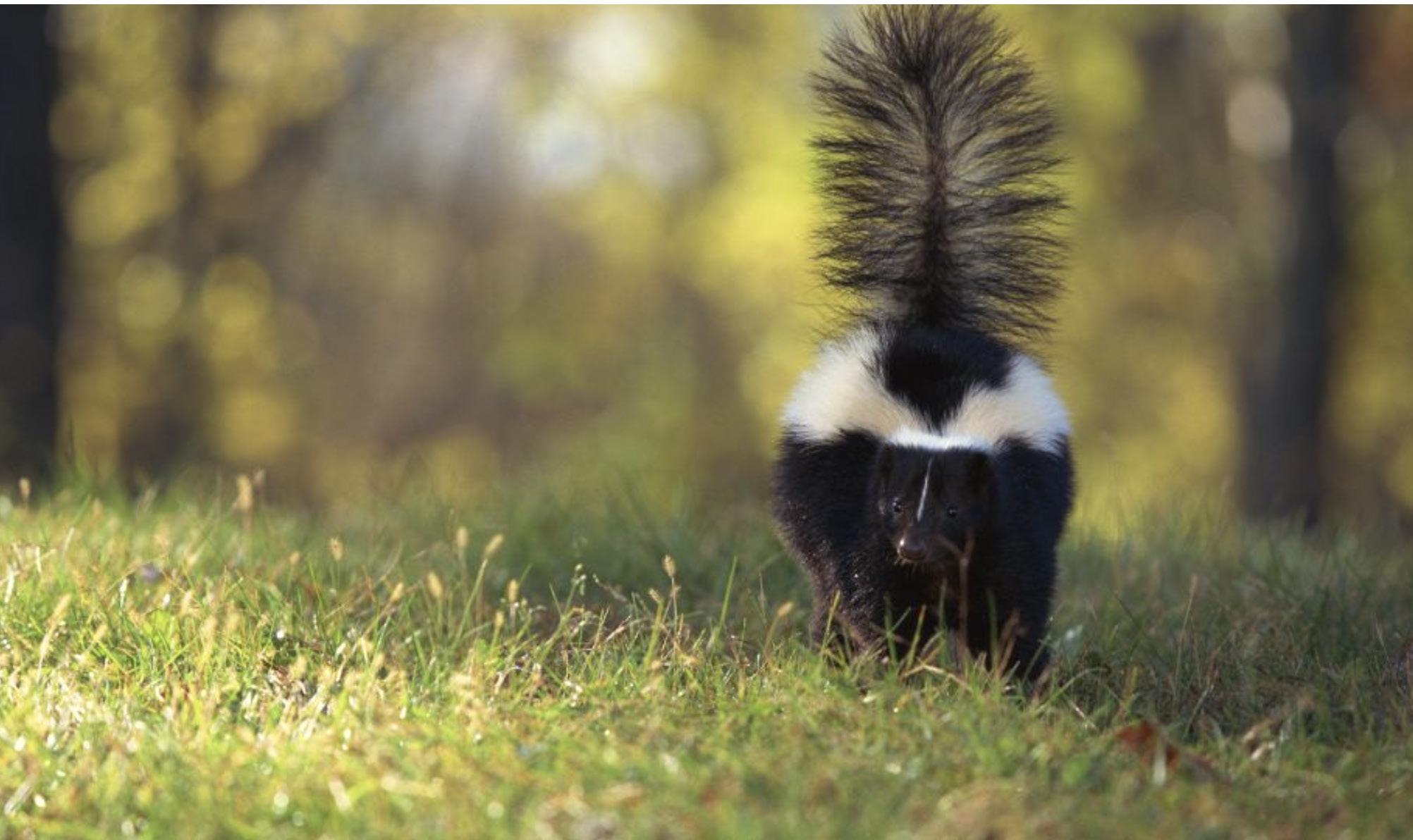
the deer. As the tree grows and casts more shade, the mountain mint is shade stressed and doesn’t become the bully it can potentially be.”
Can we have beautiful gardens and co-exist with wildlife? Absolutely! Try these creative planting strategies to deter the critters to have a multi-season floral display that clients will love and pollinators adore.

Our ag tax specialists deliver money-saving strategies.
The taxes you owe don’t have to be a surprise – at least not with a defined tax strategy from Farm Credit East. Our ag tax specialists can work with you to develop a tax strategy that minimizes the taxes you pay. Contact the tax specialists at Farm Credit East for a plan that works for you.
farmcrediteast.com 800.562.2235


The Department of Energy has awarded nearly $1 million to understand the fates of two different stands of Eastern hemlocks in Massachusetts. A non-native, hemlock-loving invasive species known as the hemlock woolly adelgid is wiping out stands of Eastern hemlock throughout the East Coast of the U.S. Though no trees survive completely, some stands can resist the invasion for longer than others, and the Department of Energy recently awarded $999,990 to a team of scientists, led by Ashley Keiser, assistant professor in the Stockbridge School of Agriculture at the University of Massachusetts Amherst, to find out why.
The hemlock woolly adelgid first arrived in the U.S. in the early 1950s. As the climate has warmed, it has spread from its initial berth in Virginia to 19 states from Georgia to Maine and west to Michigan. The insect feasts on the sap of Eastern hemlock, slowly starving the tree. Many of the infected hemlocks will die slowly over the course of a decade — but not all of them.
“There’s been an unequal decline,” says Keiser. “In fact, at the Harvard Forest in central Massachusetts, two non-contiguous stands of hemlock were each infected with hemlock
woolly adelgid at the same time. One stand is suffering badly, but the other seems to be managing the infection.”
The Harvard Forest is one of the U.S. National Science Foundation’s Long Term Ecological Research (LTER) sites, which host decades-long ecological experiments and will be one of the places Keiser and her team focus on over the next three years, along with Hubbard Brook in New Hampshire, another LTER site.
It could simply be that the soil in one place is more conducive to hemlock health than in the other. Still, Keiser and her colleagues, including co-investigator Kristen DeAngelis, professor of microbiology at UMass Amherst, suspect something much more complex: the feedback loop involving the adelgid, the hemlock, soil microbes, and the carbon and nitrogen stocks in the soil.
The adelgid feasts on hemlock sap because it’s rich in carbon and nutrients, which the tree uses for its benefit. But hemlocks, like all trees, also feed soil microbes by actively exuding compounds beneficial to the below-ground microbial community. These exudates include carbon, and up to 50% of the carbon that a tree takes into its system might be shared

below ground as low-molecular-weight carbon compounds within the rhizosphere — the soil and microbes that cluster around each tree’s roots.
The rhizosphere microorganisms get up to 50% of their energy from the plants growing in their midst. In contrast, the adelgid eventually kills its host, and the microbial community actively repays hemlocks by helping to ensure their health.
“We know that plants can shift the composition of their exudates when they are under stress, including when chewed on through herbivory,” says Keiser. “But we don’t know what changes in exudation from a non-native pest, like the hemlock woolly adelgid, does to the rhizosphere or how it affects stocks of carbon and nitrogen in the soil. We also don’t know why plants are shifting their exudation — is it because the adelgid is draining its resources or is it a deliberate response?”
Keiser and her team’s research branches out even further than the relationship between insects, trees, and microbes to the carbon cycle of entire forests and, therefore, to the Earth’s climate. Working with colleagues Debjani Sihi at North Carolina State University and Benjamin Sulman at Oak Ridge National Laboratory, the team will translate their local results into ecosystem models to predict forest-level changes in carbon and nitrogen cycling. Since trees and microbes are one of the conduits through which carbon passes from the atmosphere to the soil and vice versa, anything — like the adelgid — that affects this relationship stands to alter the world’s carbon balances. But again, no one knows exactly how.
“We’re going to be able to incorporate our findings into ecosystem models so we can better understand what happens to forest carbon cycling as we lose Eastern hemlocks,” says Keiser.
For more information, visit https://ag.umass.edu/ landscape/fact-sheets/hemlock-woolly-adelgid-frequently-asked-questions.

Seed Mixes Coir Logs, Straw Wattles, Blankets and Mats

By Heather Prince
How do we create those precious moments of pause for ourselves and our clients in the hustle and tumble of everyday life? As designers, gardeners, architects, and horticulturists, connecting people to plants and the natural world is something we do every day in every season. Using design techniques, you can build moments of mindfulness into your gardens, rewarding your clients with new perspectives on their spaces and their pieces of the planet.
Vallari Talapatra, President and Landscape Architect of Eco Scapes, Inc. recently shared her process of designing and creating pause spots. We caught up with her to explore further what it means to stop, breathe, and connect.
“One of the key principles in the way I design and is something I teach my students is what I call the twopronged approach: Reading the Client and Reading the Land,” says Talapatra. “I want to create a cohesive land-
scape yet make it personal and experiential. With a cohesive landscape, you often have these organized gardens with bold drifts and strong lines, but sometimes the connection to the awesomeness of nature gets lost. I tell clients I’m going to give them a landscape that looks seamless from the curb, while also building in moments of pause and small experiences.”
Talapatra believes it is crucial to give her clients various types of encounters in their landscapes. Within a cohesive, organized design that is readily legible, she builds in deeply personal opportunities and small moments so clients have reasons to interact with their yards. “One of the things that matters to me is to be attentive. I use the word ‘mindful’ all the time. When you’re mindful, you’re present, and it makes you more centered and grounded. I feel the onus is upon me to slow my clients down. I call them pause spots, because it’s a place to pause, reflect, and be mindful, even if it’s only for a few moments in the day.”

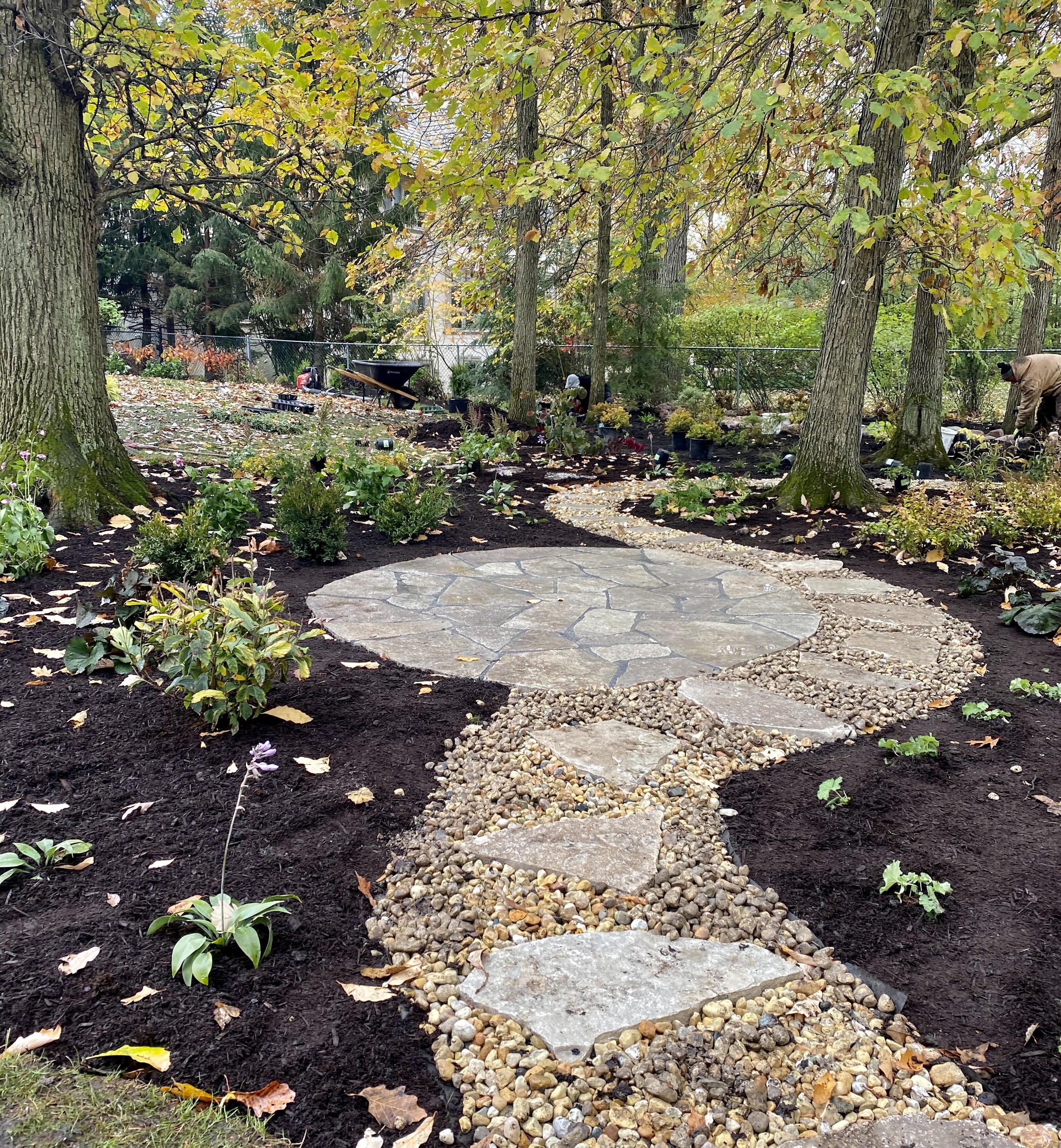


One of the key elements Talapatra believes makes for well-crafted design is strong geometry. A garden that responds to the geometry and forms of the home and land naturally feels cohesive and seamless. Within these strong forms, Talapatra builds in accent spots. “For example, in the bend of a curve, you can place a bench. In a square motif, you can build out a side for a sitting space. It’s an opportunity to create something extra, something a little bit more. You slip in these opportunities.”
One example from her practice was a dry creek bed built for a client who was dealing with flooding. Within the stones of the creek bed, Talapatra incorporated larger rocks
and boulders to invite the clients into the space. “I designed spots with some outcroppings of stones where you can sit down along the dry creek and a little flagstone seating area,” recalls Talapatra. “You can sneak these small elements into a front yard water feature or bench. But it doesn’t just have to be hardscape. I’ve done this within trails, expanding the trail to feature an accent tree like a Japanese maple. Sometimes I ask my clients to go out and pick their favorite rocks, and they don’t even know where it’s going to be used. I give them a little surprise — they can just be walking along the trail and find this “Aha!” moment. I also find ways to integrate that same type of stone, say a granite boulder. I’ll use the same granite boulders in vari-
ous other spots so that there is some unity and repetition. I like to stick to the key principles of unity, order, and rhythm.” Talapatra also likes to use art in the garden. She’ll give her clients a mission to find a piece they love from local art fairs or markets. It makes their landscapes very personal and gives them a reason to go outdoors to enjoy the piece.
Once she has determined her forms and layout, Talapatra dives into material composition. What will the path be made of? Should the patio be concrete, pavers, or flagstone? An easy way to slow people down in a landscape is to change the materials underfoot. Add some large flagstones to a mulch trail to encourage someone to stop and then plant something to

catch their eye, even if it’s a fleeting spring bulb. That small pause spot then becomes a destination in spring. “The trick is to make it enticing,” observes Talapatra. “Make it interesting and exciting to experience.”
The patterns in paving choices can also signal transitions and pauses. “The material change you’re walking on is really important,” says Talapatra. “I also sometimes change the pattern of what’s underfoot. I’ll design a circular pause point with a radial pattern, while the actual walkway could be a herringbone or running bond. Another technique is to alter the size of your materials. For example, small cobblestones might line a walkway. As you come to the pause point, I’ll switch it up and go with bigger accent boulders that might
invite you to take a seat. You can also alternate colors, so if you have a dark walkway with a lighter edging, your pause spot would be the reverse.”
How do clients react to these pause points? “Unanimously, I’d say they love them!” enthuses Talapatra. Of course, there are inevitably some questions as you build the design and determine the budget. “I had a client where the wife loved to read, so I designed a special reading nook for her. The husband was hesitant about incorporating that due to budget constraints. I was able to justify it by locating it under a tree where the grass didn’t grow well. I had a curvilinear design with large, sweeping 12-foot-
deep beds. I needed to create access into those beds, so why not a pathway coming through it that can also have a pause spot that doubles as a reading spot?”
For some projects, Talapatra uses pause moments to change perspective. “From the patio, I’ll take you out into the rest of the backyard and give you a pause spot at the far end or at the edges of the yard. It completely changes the perspective and gives them an unexpected vista. Sometimes I’ll use borrowed views like the neighbor’s huge, beautiful oak that the client may not even know is there. You are orienting them to see something they never saw before. I also consider how to get to that destination. Cohesiveness and unity are extremely important in a garden. I don’t like it to look chaotic. I choose materials that

flow with the design and are not too shocking or too different.”
Talapatra firmly believes in following the mechanics of design and being deliberate about the steps. She has found it keeps her designs cohesive and provides a way to create deeply personal spaces for each client. Designing pause spots has also allowed her to stop and absorb a landscape for herself. “I try to stop and appreciate, even if it’s a leaf that has an interesting venation pattern. To marvel at a unique leaf and look up at the branches above and notice the same fractal geometry in the trees above is very special. The most overarching theme for me is the joy of watching the magic of nature. That’s what I want to bring to my clients and that’s the reason I love designing landscapes.”
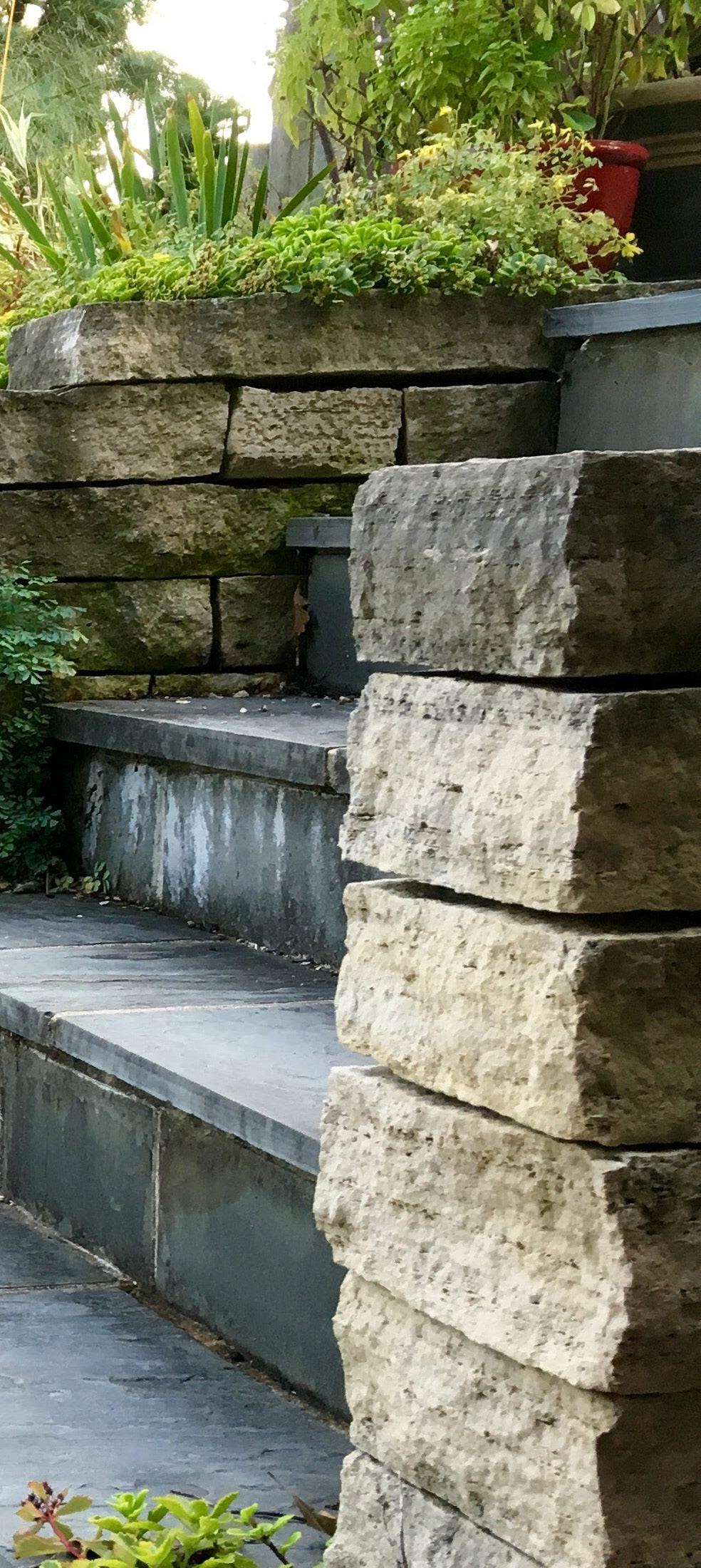

By Jennifer Gray
The Horticultural Research Institute (HRI) is pleased to announce that, in response to the recent discovery of Phytophthora austrocedri, nearly $250,000 in federal funds have been shifted to address the urgent research needs of the horticultural community. The funds, provided through USDA Agricultural Research Service’s (ARS) Floriculture and Nursery Research Initiative (FNRI), will be used to study and manage this emerging threat to the horticulture industry. The research represents a concerted effort to safeguard valuable plant species at risk from this destructive pathogen, particularly those in the Cupressaceae family, which includes economically and ecologically important plants like cypress, arborvitae, juniper, and cedar. HRI would like to thank USDA partners Drs. Tim Rinehart, Jerry Weiland, and Nik Grunwald, and Oregon State University partners Drs. Alan Peper and Mana Ohkura for working quickly to reprioritize FNRI research objectives toward this emerging issue.

chilensis trees, Phytophthora austrocedri has since emerged as a growing concern in other parts of the world, including the United States, where it has been detected in two Oregon nurseries.
The pathogen’s ability to survive in soil and to move with irrigation water makes it highly adaptable and difficult to control, posing a significant threat to horticultural operations, particularly nurseries and landscapes that rely on susceptible plant species.
Phytophthora austrocedri Killing Juniper. Photo used with permission of Forestry Research. Crown Copyright, Forestry Research, United
Phytophthora austrocedri is a water mold that causes severe disease in woody plants, primarily affecting the roots and collar area, which leads to the decline and death of the infected plants. The pathogen is part of the broader Phytophthora genus, a notorious group that includes species responsible for diseases such as sudden oak death and potato late blight. First detected in Argentine Patagonia, where it was linked to widespread dieback of the native Austrocedrus
The plants most at risk from Phytophthora austrocedri are members of the Cupressaceae family, including popular ornamental species such as Leyland cypress and Chinese juniper. Cultivars of both species are widely used in landscaping and nursery production across the U.S. due to their aesthetic appeal, drought tolerance, and ability to provide windbreaks and privacy screens. The spread of Phytophthora austrocedri could have severe economic consequences, especially for the nursery industry, which relies on the production and sale of these plants. Additionally, this pathogen poses a risk to natural ecosystems, where native species could also be impacted, leading to broader environmental consequence.
The funding will enable researchers to explore several key aspects of this pathogen, including its biology, modes of transmission, environmental factors that contribute to its


spread, and potential methods for controlling or mitigating its effects. Developing an understanding of the disease’s epidemiology will be critical for implementing effective management strategies, both in nurseries and in the broader landscape. As part of this effort, HRI is collaborating with leading plant pathologists, nursery operators, and landscape professionals to ensure that research results can be quickly translated into practical recommendations for the industry.
One of the primary objectives of this research is to develop best management practices (BMPs) for nurseries and landscapers to prevent the spread of Phytophthora austrocedri. BMPs will include guidelines for irrigation management, sanitation practices, and the use of fungicides or other chemical treatments that have proven effective in managing related Phytophthora species. Given the pathogen’s ability to spread through contaminated soil and water, nurseries may need to adopt stricter protocols to prevent the unintentional movement of the pathogen via plant material, tools, or irrigation water. Research will also address how the pathogen responds to environmental conditions in the Pacific Northwest, which are characterized by having cool, wet winters and warm, dry summers.
Additionally, further research is needed to explore whether certain cultivars or species within the Cupressaceae family exhibit greater resistance to the disease, which could inform future breeding programs.
This research will also involve exploring potential chemical controls that can be safely and effectively used to manage the pathogen in both nursery and landscape settings. While fungicides can sometimes provide temporary protection, the goal is to develop integrated pest management strategies that rely not only on chemical control but also on cultural practices that reduce the risk of disease introduction and spread. The possibility of biological controls, such as natural predators or antagonistic organisms that can suppress the pathogen, will also be explored.
HRI thanks the research group consisting of Dr. Nik Grunwald, Dr. Jared LeBoldus, Sarah Navarro, Dr. Mana Ohkura, Dr. Alan Peper, Dr. Ebba Peterson, and Dr. Jerry Weiland for their efforts to provide insights and actionable advice for growers on this critical issue.
The collaboration between HRI and USDA and the ability to direct funding where it is most urgently needed, underscores HRI’s commitment to addressing emergent threats within the industry and ensuring that growers, landscapers, and plant health professionals have the tools they need to protect plants from serious diseases like Phytophthora austrocedri. As this research progresses, HRI will continue to work closely with stakeholders to share findings and recommendations, ensuring that the horticultural community is well-equipped to manage this new challenge and protect the plants that play such a vital role in both the economy and the environment.

Plants infected with Phytophthora austrocedri typically exhibit symptoms such as root and collar rot, which can lead to the gradual decline and death of the plant. Early signs include yellowing or browning of foliage, often starting at the top of the tree, and wilting of branches. As the disease progresses, the bark at the base of the trunk may crack, revealing necrotic, discolored tissue underneath. In advanced stages, the tree may show dieback of the crown, and infected roots become blackened and decayed, ultimately leading to plant death. Since these symptoms resemble those caused by other Phytophthora species, laboratory testing is often needed to confirm the presence of P. austrocedri.
Additional Resources:
CABI Compendium: Phytophthora austrocedri
Purdue/USDA-APHIS-PPQ-CPHST Pest Datasheet for Phytophthora austrocedri
UK Forestry Commission Phytophthora austrocedri Symptoms Guide




by Nina A. Koziol
When my grandparents bought an old house in Essex, England, the front garden had a very large weeping silver birch, also called a European white birch (Betula pendula). Planted during the Victorian era, that graceful tree with its pendulous branches and attractive bark was sought after as a specimen. Victorians appreciated dramatic weeping trees for their emotional and symbolic effect. Weeping willows were used throughout cemeteries in the 1800s, and weeping mulberries, weeping Camperdown elms, and cascading hydrangeas trained to a single trunk graced many gardens back then.
Today, these uniquely shaped woodies can provide four-season interest. And, there are many newer, improved varieties suitable as small specimens as well as impressive monsters like weeping spruce and pines.
At his home in Manhattan, Illinois, Mike Cook of Cedar Path Nurseries appreciates his 10-foot-tall Lavender Twist® redbud (Cercis canadensis ‘Covey’). “I’ve had one for about 19 years. It’s a super nice plant and I have it right up against our patio. It will weep until it hits the ground and then the branches run along, but you can prune it up.” Weeping Ruby Falls redbud (C. canadensis ‘Ruby Falls’) is another favorite. “We grow it in the nursery, and I try to get them staked at 8 to 10 feet tall — it’s a really gorgeous tree with its red leaves.” And the fall color is a plus.
For Tim Wood, product development/marketing manager, at Spring Meadow Nursery in Grand Haven, MI, Weeping Extraordinaire™, a newer double flowering cherry (Prunus x ‘Extrazam’), is worth checking out. “It’s a beautiful weeping woody that has very nice, big double pom-pom flowers — very attractive and heavy blooming, and the flowers last longer than a single flowered type.”
For smaller landscapes, there are attractive cascading shrubs, like cultivars of native ninebark, suitable for border and foundation planting. “We have a Physocarpus Ginger Wine® that’s a nice weeping plant,” Wood said. “It has very bright orange-red foliage and long graceful stems with flowers up and down. When the blooms pass, you get bright pink seed heads. I think it’s really stunning. It’s a plant that’s going to be in the 6- to 8-foot range, but very graceful and quite attractive.”


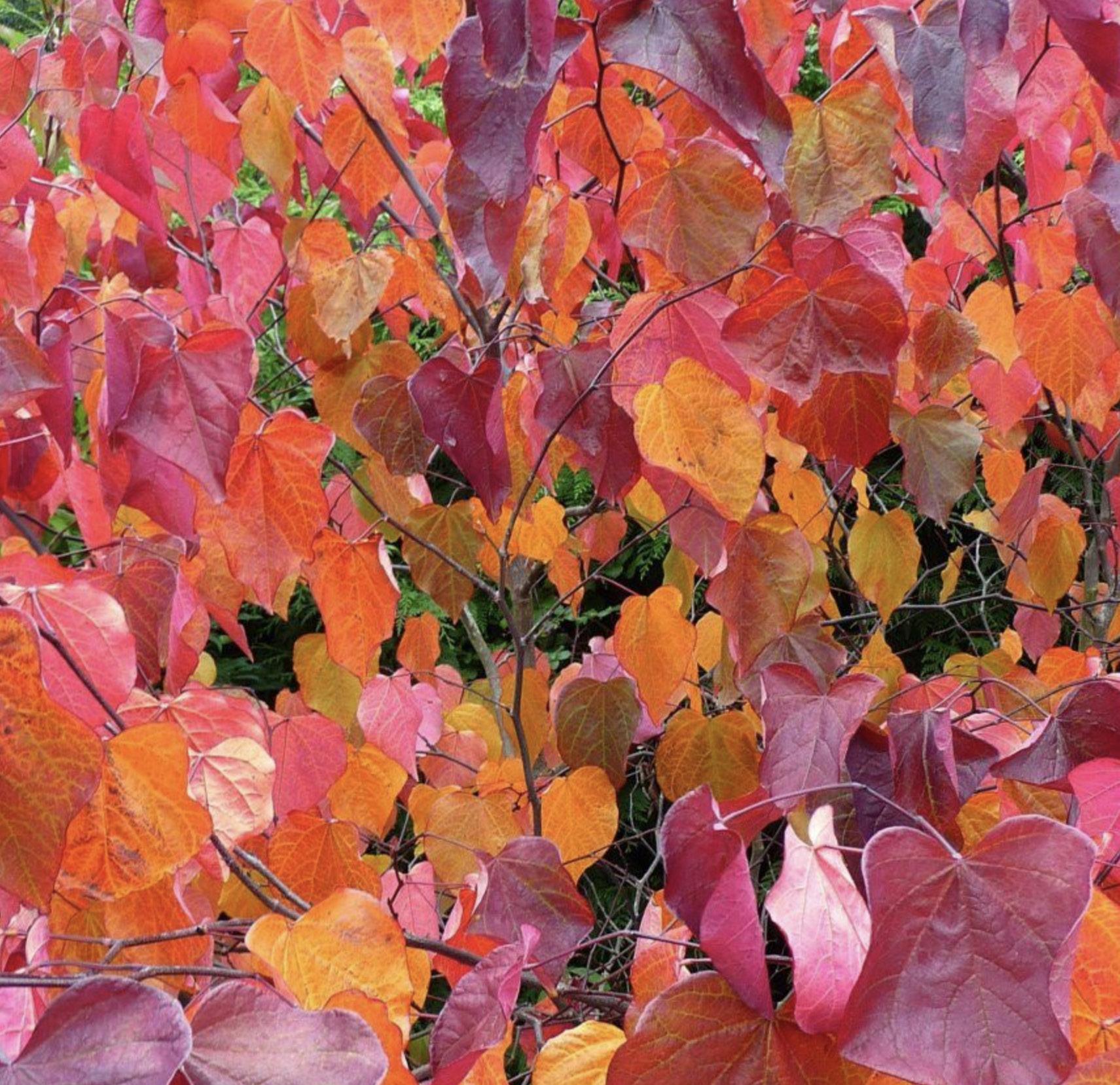

Weeping Canadian hemlock (Tsuga canadensis ‘Pendula’) is a very attractive specimen. “We have always loved the hemlock as part of our plant mix, so when we found this weeper, we had to add it to the list. It knows its place so it doesn’t get too big, which will allow it to work in tighter spaces. It will take full sun but doesn’t mind a little bit of shade and it also has a great texture. We ultimately like this plant because of its unique form that allows it to be a focal point in any planting bed.”
Haywire® false cypress (aka Chamaecyparis lawsoniana ‘SMNCLUTL’) is an interesting evergreen that Wood recommends. “It’s a long-threaded plant that has nice weeping foliage. And it’s pyramidal — the branches are nice and weeping and it’s not excessively big — somewhere in the 12- to 18-feet tall range. It’s quite

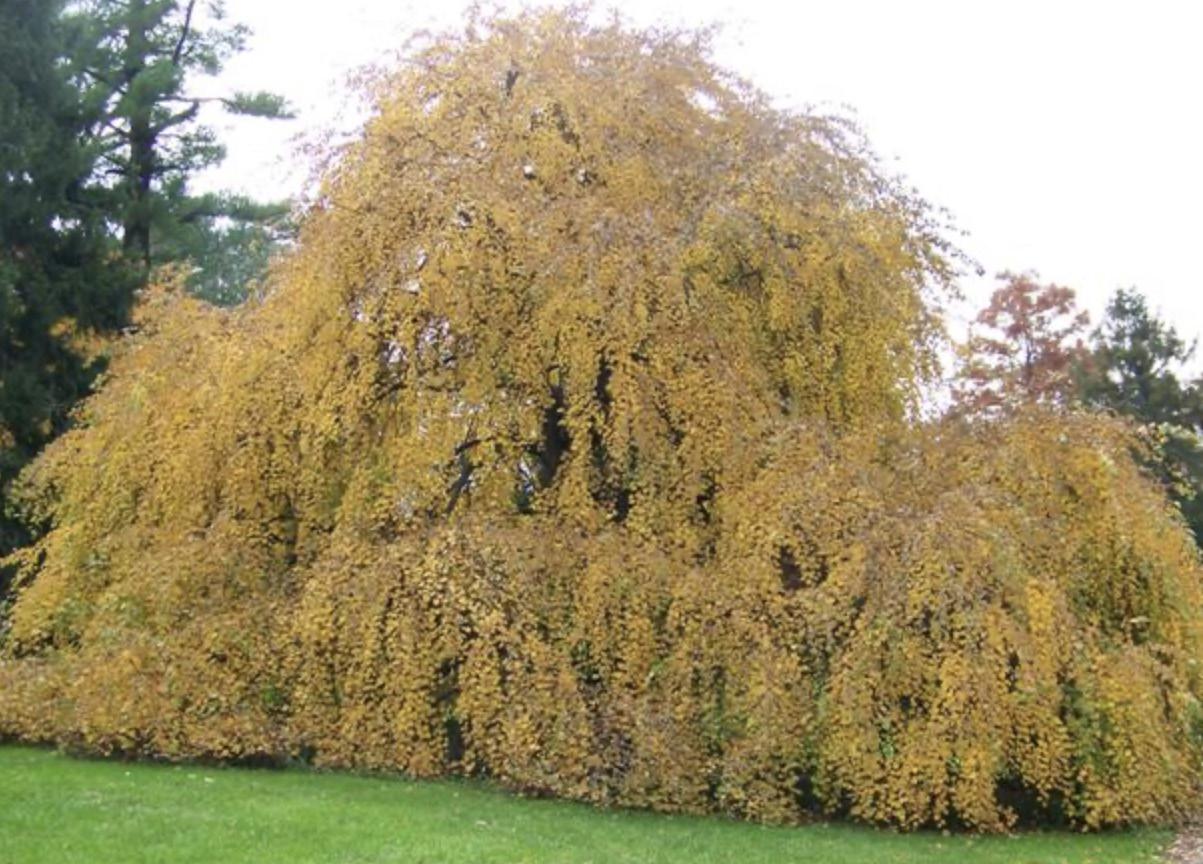



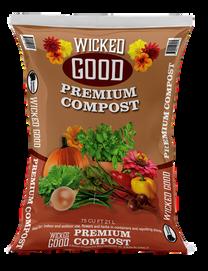










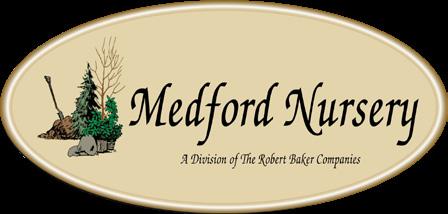



attractive and not quite as appetizing to the deer, which is nice.”
Berliner’s Serbian spruce (Picea omorika ‘Berliner’s Weeper’) is another interesting cascading evergreen. “We like this plant for a variety of reasons,” Doty said. “It’s a weeper, but has more of an upright form, so you could call it a subtle weeper because the effect comes into play from the pendulous side branches. Since this plant wants to go up, it can also fit in moderate-sized spaces. The other standout feature is the nice blue-green foliage.”
Many evergreen plants start out on the west coast as liners. “I’ve been lucky to go out to the Portland [Oregon] area, and the plants that attracted me were huge weeping cedars or Chamaecyparis,” Cook said. “Most landscapers would raise an eyebrow at the thought of putting a messy mulberry into a homeowner’s landscape, but fear not. There’s the fruitless weeping Morus alba ‘Chaparral’ that looks pretty nice,” Cook said. At 6 to 8 feet tall and 8 to 12 feet wide, Chaparral is generally top-grafted to a standard white mulberry at about 6 feet off the ground so that all branches weep down.
Another Cook favorite is katsura (Cercidiphyllum japonicum). “There are two katsura weepers — Amazing Grace and Morioka. But they can be real sticky growers that need consistently moist — but not [soaking] wet —soil. I have one in my yard and it’s never been quite happy — I keep it watered in July and August.” Given the right conditions, the tree’s fall color and the subsequent cotton candy scent are a bonus.




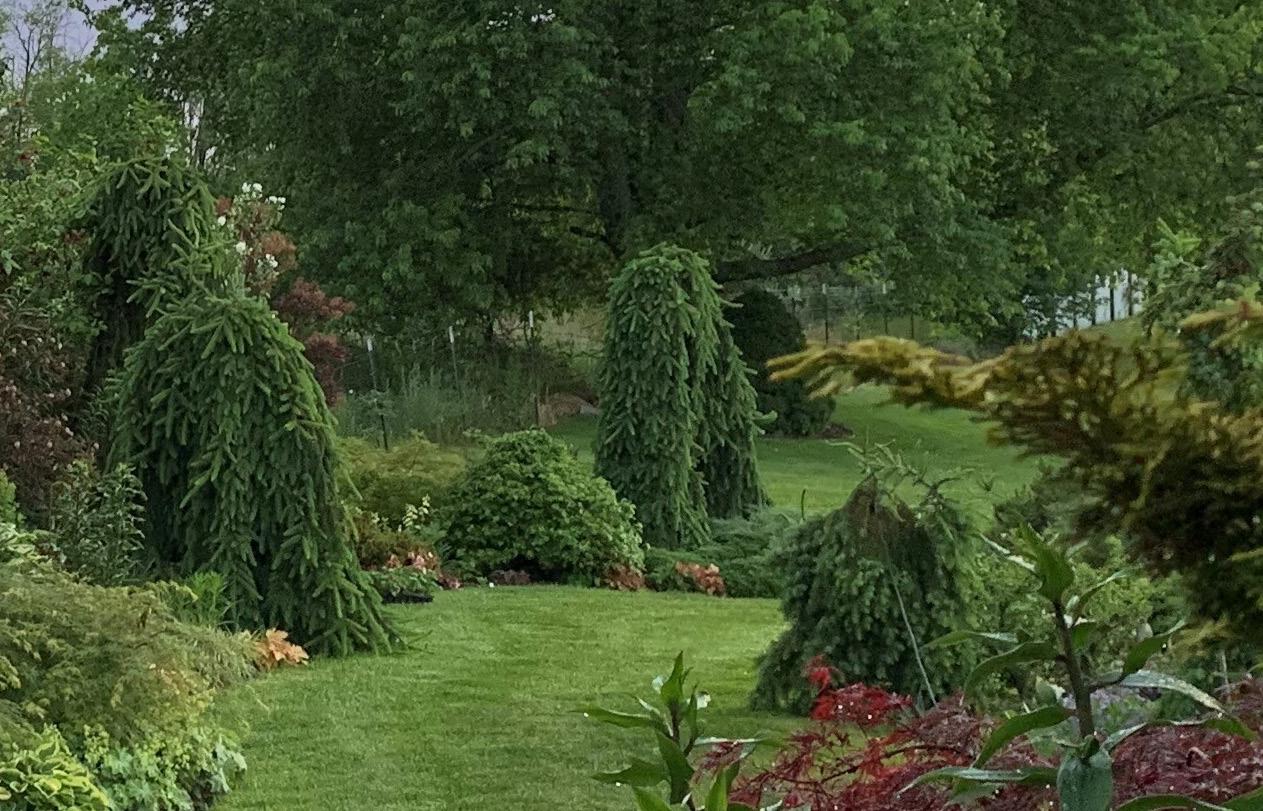

Sometimes it’s the little details like cones that add to the interest. For example, there’s Acrocona Norway spruce (Picea abies ‘Acrocona’). “As it grows, it goes in all directions in a beautiful way,” Doty said. “It tends to stay low and goes out, so it needs more width than room for height. It will take some shade because of its Norway spruce heritage. The stand out, stop-youin-your-tracks feature of this one is that its cones come out with a vibrant reddish color that fades as the season progresses. Even at a young age the cone production can be fairly consistent.”


All employers are required to notify OSHA when a worker suffers a work-related fatality, inpatient hospitalization, amputation, or loss of an eye. A fatality must be reported within 8 hours, and inpatient hospitalization, amputation, or eye loss within 24 hours.
Depending on the industry and number of workers employed, covered employers must also maintain a record of:
• All work-related recordable injuries and illnesses that result in:
• Death
• Days away from work
• Restricted work or transfer to another job
• Medical treatment beyond first aid
• Loss of consciousness
• Significant work-related injuries or illnesses diagnosed by a physician or other licensed healthcare professional (e.g., cancer,
• chronic irreversible diseases, fractures, and punctured eardrums);
• Needlestick injuries and cuts from sharp objects contaminated with another person’s blood or other potentially infectious material;
• Medical removal under the medical surveillance requirements of an OSHA standard;
• Work-related hearing loss; and
• Tuberculosis related to workplace exposure
Covered employers must record work-related incidents on designated injury and illness recordkeeping forms (Forms 300A, 300, and 301 or equivalent forms). If requested, employers must give current employees, former employees, and their representatives, copies of these records. Certain establishments must submit information from those forms electronically to OSHA each year. Recordkeeping helps employers recognize injury and illness trends, a key component in safety and health programs that identify and correct hazardous working conditions (osha.gov/safety-management). Reporting work-related injuries or illnesses to your employer is your right and is vital to the success of safety and health programs.
• Speak up about hazards.
• Report workplace injuries and illnesses and encourage your coworkers to do the same.
• Participate in safety discussions and inform your employer or supervisor of hazards you anticipate, observe, or encounter.
• Get safety and health training for your job.
• Use safety equipment that is required for your job, such as gloves, hearing protection, or a harness and lifeline for fall hazards. In most cases, employers must provide personal protective equipment at no cost (osha.gov/personal-protectiveequipment).

For more information on OSHA’s Injury and Illness Recordkeeping and Reporting Requirements, visit osha.gov/recordkeeping.
Federal law entitles you to a safe workplace. Your employer must keep your workplace free of known health and safety hazards. You have the right to speak up about hazards without fear of retaliation. You also have the right to:
• Receive workplace safety and health training in a language you understand.
• Work on machines that are safe.
• Refuse to work in a situation in which you would be exposed to a hazard.
• Receive required safety equipment, such as gloves or a harness and lifeline for falls.
• Be protected from toxic chemicals.
• Request an OSHA inspection, and speak to the inspector confidentially.
• Report an injury or illness, and get copies of your medical records.
• Review records of work-related injuries
• and illnesses.
• See results of tests taken to find workplace hazards.
For additional information on Worker Rights and Protections, visit osha.gov/ workers.
The Occupational Safety and Health Administration’s mission is to ensure workers have safe and healthy working conditions. As such, they conduct work place inspections regularly and when standard violations are found, citations and monetary penalties are issued.

Below is a list of some of the frequently cited OSHA standards for landscape businesses from October 2022 through September 2023.
There were 50 citations for this standard, which calls for personal protective equipment to be provided, used and maintained in a reliable condition whenever hazards or processes are capable of causing injury or impairment.
PPE typically necessary in landscaping applications includes, but is not limited to: gloves; steel-toed boots; hearing, eye, and face protection; hard hats; respirators; and chemical-resistant boots and gloves.
Stress to your team the importance of PPE and outline which tasks require what type of protective equipment. If crew members are consistently not wearing PPE, determine if it is uncomfortable, interfering with their ability to work or if they don’t have the right mindset about safety. All PPE is designed to protect employees’ lives, health and senses.
Another related standard, 19100133, that is frequently violated is eye and face protection. As an employer, you need to ensure workers wear eye protection when exposed to flying particles, liquid chemicals or other threats. Each day,
approximately 2,000 U.S. workers suffer job-related eye injuries that require medical treatment.
Make sure workers aren’t substituting regular glasses or sunglasses for safety glasses.
If your company utilizes chemicals to treat properties, proper hazard communication is required. All chemicals need to comprehensively list their hazards and the appropriate protective measures. Chemicals are considered hazardous if they pose a threat to human health, are a physical hazard (flammable, explosive) or have environmental hazards. Make sure your team knows to read product labels before using a chemical and where to find safety data sheets.
This standard relates to workers who are at an increased risk of developing serious silica-related diseases. Employers are responsible for taking steps to protect employees from exposure to respirable crystalline silica.
Breathing crystalline-silica dust can cause lung cancer and silicosis, a nonreversible, often-fatal disease. Approximately 250 people in the United States die annually from silicosis, and hundreds more become disabled.
When workers cut brick or stone, or mix or cut concrete, they can be exposed to crystalline-silica dust. Wet-cutting masonry is the best method for reducing airborne silica dust. If wet cutting
isn’t available, a vacuum dust collection system should be used.
Don’t use a leaf blower to move dusty material or clean up gravel dust, concrete dust or construction dirt. Instead, use a vacuum or a power broom with water. Provide respirators when dust controls cannot limit exposures to the permissible exposure limit.
This standard requires employers to provide protection to employees exposed to fall and falling object hazards. Falls are one of the leading causes of work-related deaths. Falls can be fatal even from heights of 10 feet or less.
Some ways to protect employees from falls are to educate them on when and how to properly use ladders, provide personal fall protection systems and evaluate fall hazards before work begins. Stress to crew members they should not work from heights alone or if a ladder shows excessive wear or damage.
Being struck by falling objects is another risk landscape employees can encounter if they work on a job site where other trades are present on tall buildings or if an arborist is cutting tree limbs.
These hazardous zones should be roped off and head protection should be required when working in these areas.
All of these can seem like common sense safety practices, but it’s easy to let things slip. Be vigilant in putting safety first in your operations to avoid unexpected fines.
Jeana’ is an exceptional garden phlox renowned for its impressive flower show, tall sturdy habit, and pollinator-friendliness. Dense, domed trusses crown stiff stems from midsummer to early fall. Individually, the fragrant lavender-pink flowers are significantly smaller than typical garden phlox — only about half an inch wide — but the show at peak is eye-popping, nonetheless. This is a case where bigger is not better, from a pollinator’s perspective anyhow. In trials at Mt. Cuba Center in Delaware, the nectar-rich flowers of ‘Jeana’ attracted more butterflies than any other garden phlox in their study. Hummingbirds and other pollinators are fans too.
Topped with flowers, ‘Jeana’ can reach five feet tall and four feet wide, although size will vary geographically. Its bright green leaves are highly resistant to powdery mildew, so ‘Jeana’ has a striking summer look with or without flowers.
Tall garden phlox provide structure and color in summer gardens and are good bridging plants between early and later flowering perennials. ‘Jeana’ is at home in traditional borders and meadows and is a natural in pollinator gardens. Mix ‘Jeana’ with other tall perennials such as bluestars (Amsonia), Shasta daisies (Leucanthemum ×superbum), and switch grasses (Panicum virgatum). Or let its handsome foliage be the backdrop for shorter companions such as coneflowers (Echinacea), alliums (Allium), and woodland sages (Salvia nemorosa)
• Schedule similar to other Phlox paniculata cultivars.
• For early spring sales, best potted early fall and overwintered as slow to bulk in spring. Ensure better branching / fuller gallon with an early pinch on any pot with fewer than 3 shoots.
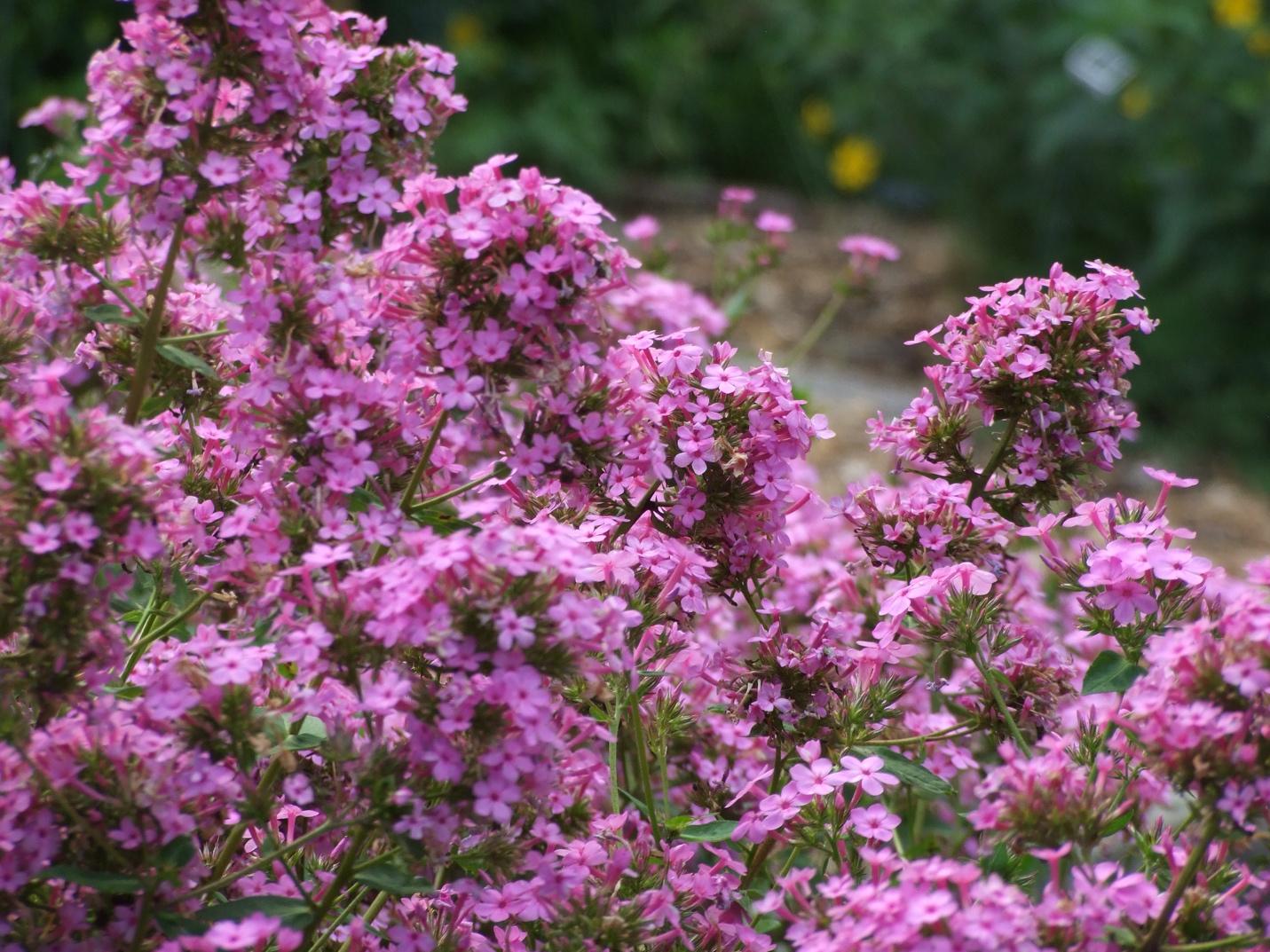
Hardiness
USDA Zones 3 to 8
Canadian Hardiness Zones 3 to 8
AHS Heat Zones 4 to 9
Light
Full sun; afternoon shade in hot climates
Size
36-60 inches tall
36-48 inches wide
Origin
‘Jeana’ was discovered growing along the Harpeth River near Nashville, Tennessee and was named for its discoverer, Jeana Prewitt.
Moist, fertile, well-drained soils. Avoid dry conditions.
• Does not require vernalization to flower; pot in spring and summer forsummer and fall sales, respectively. Late spring / early summer pruning results in bench-friendly bloom height.
• Grower-friendly: powdery mildew resistant with no special media, fertilizer, orwater requirements for finishing!
Maintenance
Divide clumps every 3-5 years in spring. Deadheading promotes continued bloom and prevents self-seeding, which can pro duce inferior seedlings. Powdery mildew and spider mites may be foliar problems in hot or dry conditions. Thinning out stems to improve air circulation may guard against mildew. Deer and rabbits can be pests.




The Massachsetts Nursery and Landscape Association has a long history of innnovation. pro|grow|news is simply a reflection of MNLA and its position in the industry. Its purpose is to promote the environmental well-being of the state as well as the highest levels of business ethics within the profession.
2024 brings renewed commitment to quality for pro|grow|news readers and advertisers will see:
• larger issues
• enhanced enhanced content
• larger pictures
• more features
• greater variety
• focused issue content
• on-time delivery
• deadlines you can count on
• seasonal content and ads delivered on time

pro|grow|news delivers loyal and active readers to its advertisers. Our policy remains — keep ad rates affordable in order to attract more product choices for members. This commitment has not wavered.
The MNLA Four Seasons Guide provides a complete up-to-date listing of MCHs and members. The annual publication is mailed to members.
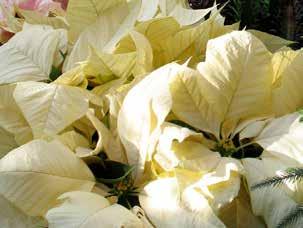



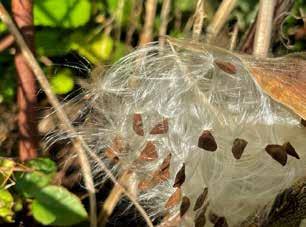

by Amanda Bigelow, MCH
When thinking about adding fall color and interest to the landscape, many automatically go to mums, asters, and Solidago, just to name a few. But what about all the amazing choices that offer us so much without flowers?
Of course, these flowering plants are a wonderful way to carry us through fall with some color but what really catches my interest are other perennials that might not be your first pick for a show-stopping display.
Ornamental grasses are so fun, and with all the different kinds out there, it’s not hard to find varieties you like. Whether you mix them in with other plant materials, display them in a mass planting, or add them to a border, they add so much diversity to the landscape. Ornamental grasses not only offer texture and movement, but also provide habitats for birds, insects, and other small animals if you decide to leave them standing throughout the winter. They will greet you in the morning with tons of charming dew drops on the inflorescence!



